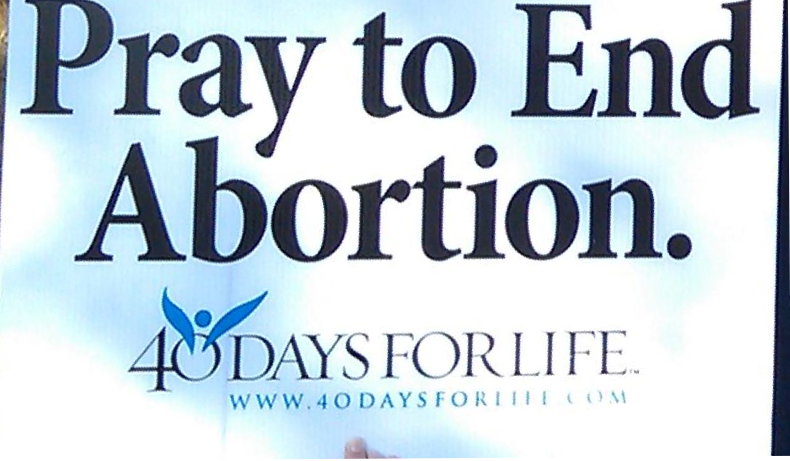40 Days for Life Prayer Vigils Start Next Week

The semiannual 40 Days for Life prayer campaign will start next week on September 25.
40 Days for Life is an opportunity for pro-life Americans to gather outside abortion facilities to pray that abortion will end.
These are not protests or rallies. Rather, they are peaceful vigils held by people who want to pray that abortion facilities will close and abortion doctors and nurses will leave the abortion industry — and they work.
Every spring and fall we hear stories about clinics closed, babies saved, and abortionists converted to Christ in the wake of a 40 Days for Life prayer campaign.
40 Days for Life prayer vigils will be held in two locations this fall.
The first is Little Rock, outside the surgical abortion facility on Office Park Drive.
Volunteers will take turns praying on different days and at different times from 7:00 AM – 7:00 PM September 25 – November 3.
There will be a delayed kick-off event on Monday, September 30, at 6:00 PM outside the abortion clinic. The guest speaker for that event will be Sue Thayer, former director of a Planned Parenthood in Iowa.
No RSVP is needed for this free outdoor event.
Go to www.40daysforlife.com/little-rock or email 40daysforlifelittlerock@gmail.com for more information.
The other 40 Days for Life event will take place in Hot Springs.
Hot Springs does not have an abortion facility, and organizers are looking for a location where pro-lifers can gather for prayer. However, they are encouraging everyone to commit to join in prayer and fasting against abortion.
For more information on 40 Days for Life in Hot Springs, email kelly@lllife.support or go to https://www.facebook.com/40daysforlifehotsprings/.





